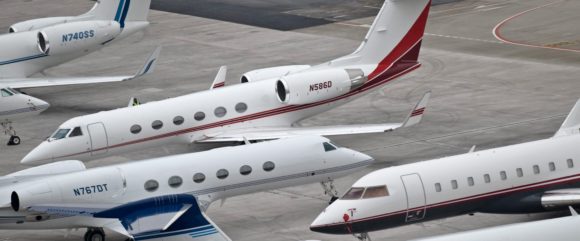
EmiratesA380DubaiAirshow2017
Emirates recorded its weakest year in 2018-19 in eight years, when announcing a Group profit of AED 2.316bln on May 9. This is -44 percent down on the previous year and almost at the same level as in 2011-12 (AED 2.310bln). It is also a far cry from the record-year 2015-16 when the UAE based airline group (Emirates airline plus dnata air services) reported an AED 8.179bln profit.
Chairman and CEO, His Highness Sheikh Ahmed bin Saeed al Maktoum, used the words ‘tough’ and ‘unrelenting headwinds’ to summarize 2018-19. Lower demand, lower seat factors, higher costs, negative currency effects, more competition and geopolitical uncertainties all impacted the Group and particularly the airline.
Yet, Group revenues were at an all-time high at AED 109.255bln, compared to 102.409bln the previous year. And while the profit is back at the 2011-12 level, keep in mind that revenues back then were only 66.149bln.
Profit Emirates airline melt
Looking at the airline, Emirates saw its profit attributable to its owner melt by 68.8 percent to AED 871mln on a 6 percent growth in revenues to AED 97.9bln. Operating profit was AED 2.647bln, -35.2 percent.
The number of passengers grew by just 0.2 percent to 58.6mln. In ATKM, capacity grew 3.1 percent to 63.3bln. Load factor was down 0.4 percent to 66.8, just above the break-even load factor of 66.4 percent.
According to Emirates, this is were the slowdown of the regional economies, geopolitical issues, and more competition have been felt the hardest. The airline introduced 13 new aircraft and retired 11, but since April 2018 has been parking two or more Airbus A380s each month for on average a four-week period to cap capacity.
Hurting its results last year have been a number of factors. A stronger Dollar versus the Dirham cost the airline AED 572mln, in contrast to a positive effect of 661mln the previous year.
The fuel bill reached a record-high AED 30.8bln, accounting for 32 percent of all costs. Staff costs were 3.5 percent lower due to a lower headcount (now 60.282).
Total operating costs were AED 95.3bln, compared to 88.2bln the previous year.
Emirates SkyCargo also felt the changing climate in the air freight market, which began strongly in 2018 but in the first months of 2019 (the final three of the reporting year) has significantly weakened. SkyCargo revenues still grew 5 percent to AED 13.1bln, with tonnage 1 percent higher to 2.7mln. The airline used more belly capacity than in the previous year.
Capital expenditure rose 58 percent to AED 13.1bln due to the introduction of 13 aircraft. Another 1.1bln was invested in the upgrading of airport lounges. While its total assets remained almost unchanged at AED 127.4bln, cash assets fell by 3.4 percent to 17bln but should improve again for the current year. Total debt increased by 3.8 percent to AED 53bln.
Sheikh Ahmed is very careful in his guidance for the coming year: “Every business cycle is different, and we continue to work smart and hard to tackle the challenges and take advantage of opportunities”. He adds that despite to lower result, Emirates and dnata still record its 31st consecutive year of profitability.
Fleet plans: no 787-10
Emirates confirms in its report that it will introduce Premium Economy seats on its A380 fleet from 2020. As announced by the airline on February 14, it has revised its A380 order by canceling 29 plus the complete follow-on order for 20 plus 20 options. In FY2019-20, 6 A380s will join the fleet with 8 to follow in 2021 when the A380 program will be closed. The cancellation of the A380 order and new order for 40 A330-neo’s and 30 A350-900s still has to be included in the Airbus orders and deliveries list.
This year 8 Boeing 777s will be retired. While it confirms its confidence in the 777-8 and -9 (respectively 35 and 115 on order), Emirates no longer mentions the Boeing 787-10 for which it signed an agreement for 40 at the 2017 Dubai Air Show. This order was in the previous annual report as “authorized and not contracted”, but the Dreamliner deal is now completely missing. This confirms speculation that the order was off when the airline selected the A330neo and A350 for its medium to long-haul network. The Emirates fleet now counts 270 aircraft, with 234 more on order.
Emirates’s air services subsidiary dnata recorded its most profitable year so far, with AED 1.4bln. This is influenced by a one-off advantage as the group divested itself of Hogg Robinson Group. Revenues were up 10 percent to AED 14.4bln. The international airport operations grew revenues by 5 percent to AED 4bln, giving the UAE-based company an ever worldwide presence.
Views: 1


